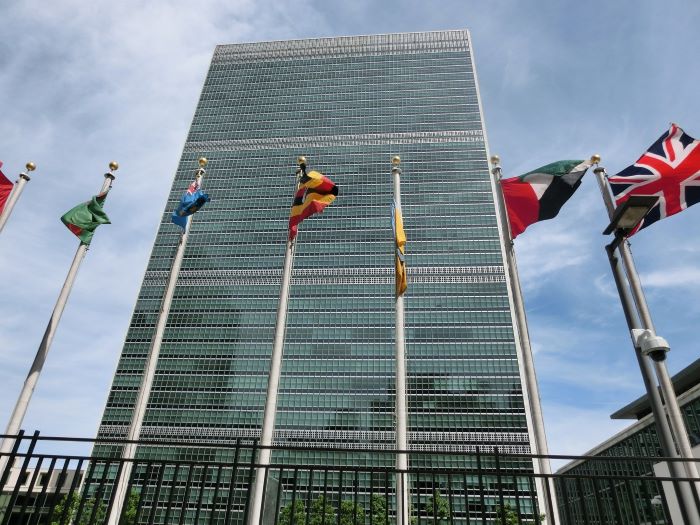 Geneva—-On World Cities Day, the World Health Organization (WHO) calls on national and city leaders to transform urban areas into engines of health, equity and sustainability.More than 4.4 billion people, over half of humanity, now live in urban areas, a figure projected to rise to nearly 70% by 2050. In cities health, inequality, environment and economy intersect in powerful and dramatic ways, creating both complex risks and unique opportunities for progress. While health challenges loom in all urban settings, the worst health outcomes are often concentrated in slums and informal settlements, with residents enduring unsafe housing, inadequate sanitation, food insecurity, and rising exposure to floods and heat. Today, 1.1 billion people live in these conditions, a number expected to triple by 2050.
Geneva—-On World Cities Day, the World Health Organization (WHO) calls on national and city leaders to transform urban areas into engines of health, equity and sustainability.More than 4.4 billion people, over half of humanity, now live in urban areas, a figure projected to rise to nearly 70% by 2050. In cities health, inequality, environment and economy intersect in powerful and dramatic ways, creating both complex risks and unique opportunities for progress. While health challenges loom in all urban settings, the worst health outcomes are often concentrated in slums and informal settlements, with residents enduring unsafe housing, inadequate sanitation, food insecurity, and rising exposure to floods and heat. Today, 1.1 billion people live in these conditions, a number expected to triple by 2050.
With the new guide for decision-makers launched today “Taking a strategic approach to urban health” WHO provides concrete ideas to usher in a new era of urban health action. The Guide responds to the growing demand for integrated solutions that address health challenges and promote health more broadly in urban settings. It is the first comprehensive framework of its kind to help governments plan urban health strategically, integrating evidence into policy and practice.
“This is a moment for decision-makers at every level to act together,” said Jeremy Farrar, Assistant Director General, for Health Promotion, Disease Prevention and Care, WHO. “The guide gives national and municipal leaders, planners, partners and communities a framework to work together, across sectors and scales, to build fairer, healthier, and more resilient futures.”
Health risks and inequities are seen in all urban areas: a study of 363 cities in nine Latin American countries found life expectancy gaps of up to 14 years for men and 8 years for women between the healthiest and least healthy cities. Urban residents everywhere face multiple, overlapping risks – from air pollution and unsafe transport to poor housing, noise and climate hazards. Air pollution alone kills around 7 million people annually, and nearly every city dweller breathes air that fails to meet WHO air quality guideline values. Dense populations heighten risks for infectious outbreaks such as COVID-19 and dengue and limited access to green spaces increases the risk for noncommunicable diseases.
Urban environments have now become the dominant day-to-day influence on human health – while also driving global challenges such as climate change, resource scarcity, and growing inequality. This makes them not only the front line for today’s health challenges, but the greatest hope for transformative change.
Strategic action on urban health can foster equity and create resilient, attractive urban environments that are conducive to economic development, environmental sustainability, and better lives. People and businesses increasingly seek environments that offer safety, livability and opportunity.
Decision-makers are bringing community voices directly into urban design for health in the Dandora neighbourhood of Nairobi, Kenya; Suva, Fiji; Makassar, Indonesia; Coimbra, Portugal and many others.
“Cities are key to advancing public health,” said Dr Etienne Krug, Director of Health Determinants, Prevention and Promotion. “This Guide offers governments a roadmap to act strategically, making operational links with other major global policy issues like climate change, transport, digital transformation and migration.”
The Guide emphasizes that health is not the responsibility of one sector alone, nor limited to the decisions of city officials. From clean air and safe housing to active mobility and digital access, to broader financing and regulatory action, decisions made every day by urban authorities across multiple sectors and scales affect the health of billions. Taking strategic action means aligning these choices to build healthier and fairer futures, where urban systems work together to advance equity, sustainability and resilience.
“Taking a Strategic Approach to Urban Health” outlines practical steps for governments to:
understand the complexity of urban systems and how they shape health and equity;
identify entry points for action, recognizing opportunities to build urban health across policy and practice agendas in other sectors and issues;
strengthen the means of implementation for urban health, including governance, financing, data, analytics, innovation, capacity-strengthening, partnerships and participation; and
develop comprehensive urban health strategies at both national and city levels.
WHO calls on municipal and national leaders to adopt a more strategic approach to urban health, recognizing the crucial role that local and national governments play in creating coherent health action that aligns with other societal goals, and making urban areas not only more livable, but more just and sustainable.
Alongside the Guide, WHO is launching the first three modules of an Urban Health E-learning course, hosted by the WHO Academy, to strengthen capacities for collaborative work in urban contexts.